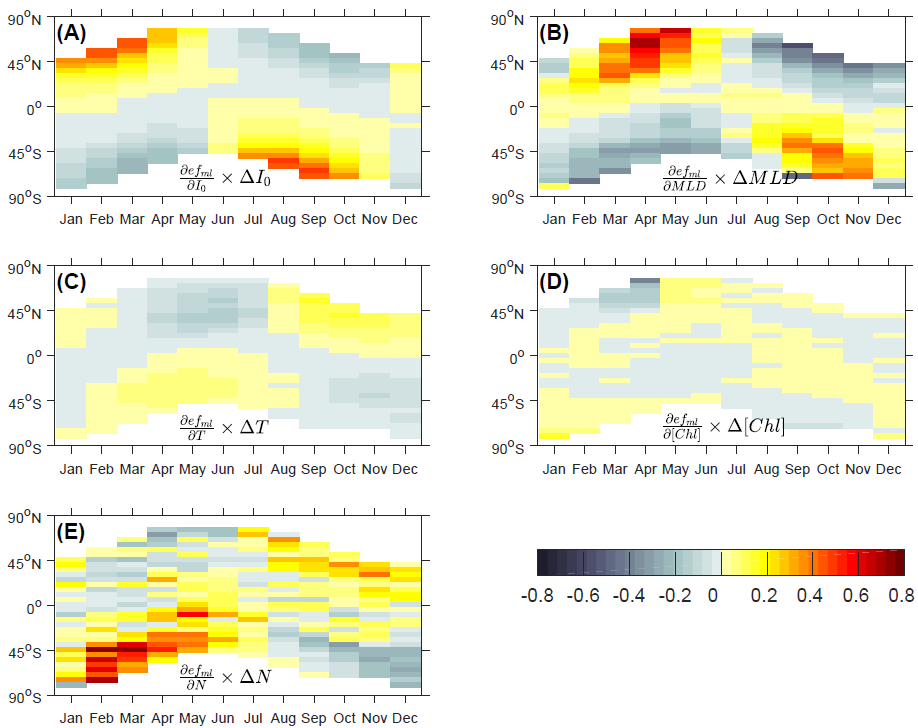The fraction of primary production exported out of the surface ocean, known as the export ratio ( ef-ratio), is often used to assess how various factors, including temperature, primary production, phytoplankton size and community structure, affect the export efficiency of an ecosystem. To investigate possible causes for reported discrepancies in the dominant factors influencing the export efficiency, we develop a metabolism-based mechanistic model of the ef-ratio. Consistent with earlier studies, we find based on theoretical considerations that the ef-ratio is a negative function of temperature. We show that the -ratio depends on the optical depth, defined as the physical depth times the light attenuation coefficient. As a result, varying light attenuation may confound the interpretation of ef-ratio when measured at a fixed depth (e.g., 100 m) or at the base of the mixed layer. Finally, we decompose the contribution of individual factors on the seasonality of the ef-ratio. Our results show that at high latitudes, the ef-ratio at the base of mixed layer is strongly influenced by mixed layer depth and surface irradiation on seasonal timescales. Future studies should report the ef-ratio at the base of euphotic layer, or account for the effect of varying light attenuation if measured at a different depth. Overall, our modeling study highlights the large number of factors confounding the interpretation of field observations of the ef-ratio.




You must be logged in to post a comment.